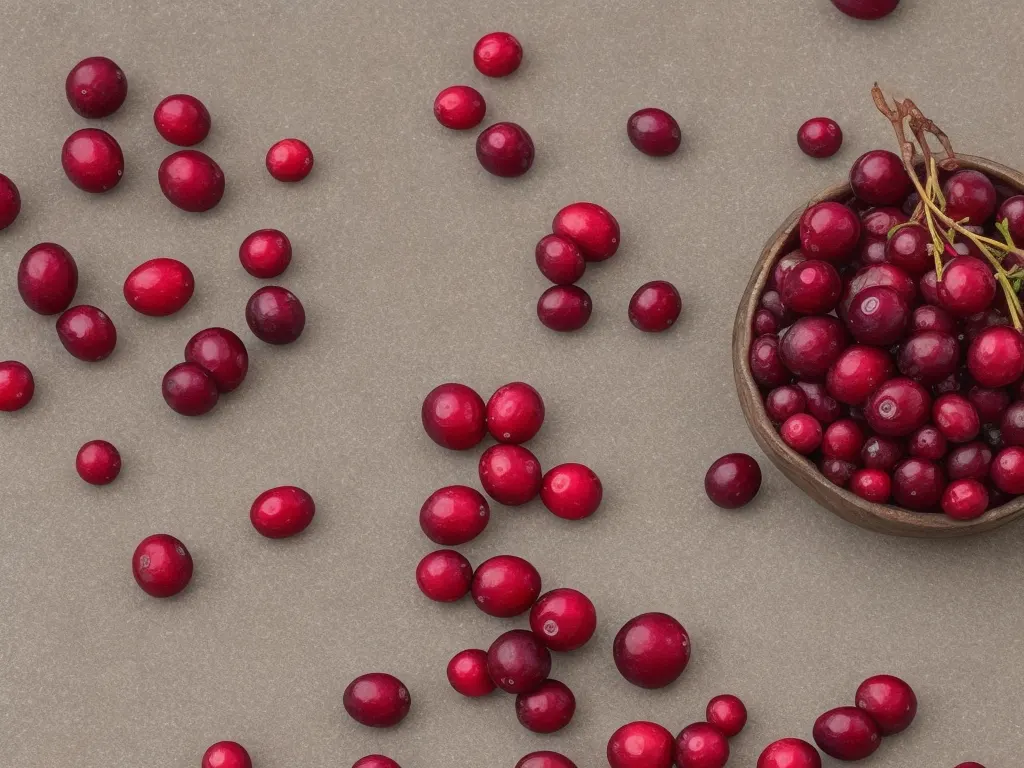OTHER NAME(S):
Acide Glycyrrhizique, Acide Glycyrrhizinique, Alcacuz, Alcazuz, Bois Doux, Bois Sucré, Can Cao, Chinese Licorice, Deglycyrrhized Licorice, East European Licorice, Gan Cao, Gan Zao, Glabra, Glycyrrhiza, Glycyrrhiza echinate, Glycyrrhiza glabra, Glycyrrhiza glabra typica, Glycyrrhiza glabra violacea, Glycyrrhiza glabra glandulifera, Glycyrrhiza glandulifera, Glycyrrhiza Radix, Glycyrrhiza uralensis, Glycyrrhizae, Glycyrrhizic Acid, Glycyrrhizinic Acid, Isoflavone, Jethi-Madh, Kanzo, Lakritze, Licorice Root, Liquiritiae Radix, Liquirizia, Mulathi, Mulethi, Orozuz, Phytoestrogen, Phyto-œstrogène, Racine de Réglisse, Racine Douce, Radix Glycyrrhizae, Régalissse, Regaliz, Reglisse, Réglisse, Réglisse Déglycyrrhisée, Réglisse Espagnole, Réglisse Russe, Regliz, Russian Licorice, Spanish Licorice, Subholz, Sussholz, Sweet Root, Turkish Licorice, Ural Licorice, Yashtimadhu, Yashti-Madhu, Yashti-Madhuka, Zhi Gan Cao.
Licorice:
Licorice (or liquorice) refers to the root of the Glycyrrhiza glabra plant, which is native to parts of Europe and Asia. It has been used for centuries in various cultures for its sweet flavor and potential health benefits. Here are some key points about licorice:
Flavor and Use:
Licorice root has a distinct sweet and slightly woody flavor. It is commonly used as a flavoring agent in candies, beverages, and various culinary dishes. It can also be found in herbal teas and supplements.
Medicinal Uses:
Traditional medicine systems, such as Traditional Chinese Medicine (TCM) and Ayurveda, have utilized licorice root for its potential health benefits. It has been used to soothe coughs and sore throats, support digestive health, and alleviate symptoms of conditions like ulcers and inflammation.
Active Compounds:
The main active compounds in licorice root are glycyrrhizin and flavonoids. Glycyrrhizin is responsible for the characteristic sweetness of licorice and also has potential anti-inflammatory and immune-modulating properties.
Potential Benefits:
Licorice root has been studied for its potential benefits in various areas, including digestive health, respiratory health, and skin health. However, it’s important to note that these potential benefits are still being researched, and the use of licorice for therapeutic purposes should be approached with caution and under the guidance of a healthcare professional.
Caution and Considerations:
While licorice has potential health benefits, excessive consumption or prolonged use can lead to health issues. High consumption of glycyrrhizin can lead to elevated blood pressure, potassium imbalances, and other health concerns. People with certain medical conditions, such as hypertension, kidney problems, and hormonal disorders, should exercise caution when using licorice products.
DGL Licorice:
To mitigate the potential side effects of glycyrrhizin, some licorice products are labeled as “DGL” (deglycyrrhizinated licorice). DGL licorice has had most of the glycyrrhizin removed, reducing the risk of certain adverse effects.
Pregnancy and Medications:
Pregnant or nursing women, as well as individuals taking medications, should consult a healthcare professional before using licorice products, as interactions and potential complications may arise.
Culinary Use:
Apart from its potential health benefits, licorice is also used to flavor various confectionery products, such as licorice candy, as well as beverages like herbal teas and liqueurs.
Remember that while licorice root has a long history of traditional use, its potential benefits and risks are still subjects of ongoing research. If you’re considering using licorice for medicinal purposes, it’s recommended to consult a qualified healthcare provider to ensure it’s safe and appropriate for your individual health circumstances.
Licorice Uses:
Licorice has a variety of uses, ranging from culinary and confectionery to potential medicinal applications. Here are some common uses of licorice:
Culinary Flavors:
Licorice root is used as a flavoring agent in various culinary dishes and beverages. It imparts a sweet, slightly woody, and distinctive taste to foods and drinks.
Confectionery:
Licorice is a popular flavor for making candies, including licorice twists, gummies, and hard candies. These candies often use licorice extract or flavoring to achieve the characteristic taste.
Beverages:
Licorice root is used in the preparation of herbal teas and infusions, both for its flavor and potential health benefits. Licorice tea is known for its naturally sweet taste and is often enjoyed on its own or blended with other herbs.
Traditional Medicine:
Licorice has been used in traditional medicine systems like Traditional Chinese Medicine (TCM) and Ayurveda for its potential health benefits. It has been employed to soothe coughs, alleviate symptoms of digestive discomfort, and support various bodily systems.
Respiratory Health:
Licorice’s potential anti-inflammatory properties have led to its use in traditional remedies for respiratory conditions like coughs, colds, and sore throats.
Digestive Health:
Licorice has been suggested to have mild laxatives and soothing effects on the digestive tract. It has been used traditionally to address issues such as indigestion, heartburn, and ulcers.
Skin Care:
Licorice extract is found in some skin care products due to its potential anti-inflammatory and skin-soothing properties. It’s believed to help with conditions like eczema and skin irritations.
Herbal Supplements:
Licorice root extract is used in herbal supplements and formulations. These supplements are often marketed for their potential to support various aspects of health, although scientific evidence for some of these claims is still under investigation.
Flavoring Agent:
Beyond its distinct taste, licorice is also used as a natural flavoring agent in foods and beverages, providing an alternative to synthetic sweeteners and flavorings.
Aromatherapy:
Licorice essential oil, extracted from the root, may be used in aromatherapy for its scent and potential relaxation properties.
Traditional Rituals:
Licorice has been used in some cultures as an ingredient in traditional rituals, ceremonies, and herbal remedies.
It’s important to note that while licorice has a long history of use in traditional medicine and culinary practices, not all its traditional uses have been fully substantiated by scientific research. When considering the use of licorice for medicinal purposes, it’s advisable to consult a healthcare professional, especially if you have underlying health conditions or are taking medications, to ensure its safety and appropriateness for your situation.
Licorice Side Effects:
Licorice is generally safe when consumed in moderate amounts and used for short periods, such as in culinary applications and occasional herbal tea consumption. However, excessive consumption or prolonged use of licorice, particularly in the form of supplements or concentrated extracts, can lead to a range of potential side effects. Some of the key side effects and considerations associated with licorice consumption include:
Hypertension (High Blood Pressure):
Licorice contains a compound called glycyrrhizin, which can lead to an increase in blood pressure by affecting the balance of electrolytes and hormones in the body. This effect is particularly pronounced with long-term or high-dose consumption.
Potassium Imbalance:
Glycyrrhizin can cause the body to retain sodium and excrete potassium, leading to an electrolyte imbalance that may contribute to hypertension and other health issues.
Fluid Retention:
The hormonal changes caused by glycyrrhizin can result in fluid retention, swelling (edema), and weight gain.
Hypokalemia:
Prolonged consumption of large amounts of licorice can cause low levels of potassium in the body, which may lead to muscle weakness, irregular heartbeat, and other complications.
Hormonal Imbalances:
The compounds in licorice can affect hormonal balance, leading to potential disruptions in the menstrual cycle and other hormonal functions.
Interaction with Medications:
Licorice can interact with certain medications, including those that affect blood pressure, potassium levels, and hormones. It can also affect the metabolism of some drugs, leading to altered drug effectiveness.
Gastrointestinal Distress:
While licorice is often used to soothe the digestive tract, excessive consumption can lead to gastrointestinal discomfort, including symptoms like nausea, vomiting, and diarrhea.
Allergic Reactions:
Some individuals may be allergic to licorice or its components, leading to skin reactions, itching, and other allergic symptoms.
Interactions with Medical Conditions:
People with certain medical conditions, such as hypertension, kidney problems, liver disease, heart conditions, and hormonal disorders, should exercise caution when consuming licorice or using licorice supplements.
Pregnancy and Breastfeeding:
Pregnant or breastfeeding women should avoid excessive consumption of licorice due to its potential effects on hormones and blood pressure.
To minimize the risk of side effects, consider the following tips:
Moderation:
Consume licorice in moderation, especially if you’re consuming products containing concentrated licorice extracts.
DGL Licorice:
If you’re concerned about potential side effects, consider using deglycyrrhizinated licorice (DGL) products. DGL has most of the glycyrrhizin removed, reducing the risk of certain adverse effects.
Consult a Healthcare Professional:
If you have underlying health conditions, are taking medications, or are considering using licorice for medicinal purposes, it’s important to consult a qualified healthcare provider before doing so.
Remember that individual responses to licorice can vary, and what may be safe for one person might not be suitable for another. If you’re unsure about the appropriateness of consuming licorice, particularly for therapeutic purposes, seeking guidance from a healthcare professional is advisable.
Licorice Precautions :
Licorice consumption comes with certain precautions, especially if you are considering using it for medicinal purposes or if you have certain medical conditions. Here are some precautions to keep in mind:
Consult a Healthcare Professional:
Before using licorice for medicinal purposes or as a supplement, it’s essential to consult a qualified healthcare professional. They can help determine whether licorice is appropriate for your specific health situation and provide guidance on proper usage.
Medical Conditions:
If you have a history of high blood pressure, heart conditions, kidney problems, liver disease, hormonal imbalances, or any other medical condition, it’s important to inform your healthcare provider before consuming licorice. Licorice’s effects on blood pressure, hormones, and electrolyte balance can interact with these conditions.
Medication Interactions:
Licorice can interact with various medications, including those for high blood pressure, heart conditions, diabetes, and hormonal disorders. If you are taking any medications, discuss them with your healthcare provider to ensure there are no potentially harmful interactions.
Pregnancy and Breastfeeding:
Pregnant and breastfeeding women should be cautious with licorice consumption due to its potential hormonal effects and impact on blood pressure. Excessive licorice consumption is generally not recommended during pregnancy and breastfeeding.
Limit Consumption of Glycyrrhizin:
Glycyrrhizin is the compound responsible for many of licorice’s potential side effects. To reduce the risk of side effects, consider opting for deglycyrrhizinated licorice (DGL) products, which have much of the glycyrrhizin removed.
Moderation:
If you choose to consume licorice, do so in moderation. Overconsumption, particularly of concentrated extracts or supplements, can increase the risk of adverse effects.
Avoid Excessive Use:
Long-term or excessive use of licorice, especially at high doses, can lead to health complications like high blood pressure, potassium imbalances, and hormonal disruptions. It’s important to follow recommended dosage guidelines.
Read Labels:
When purchasing licorice products, carefully read labels to understand the type of licorice used and the glycyrrhizin content. This information can help you make informed choices about its consumption.
Monitor Blood Pressure and Potassium Levels:
If you have a history of high blood pressure or potassium imbalances, it’s a good idea to regularly monitor these levels if you plan to consume licorice.
Children and Licorice:
Children should consume licorice in moderation. Due to the potential effects on blood pressure and electrolyte balance, it’s advisable to consult a healthcare professional before giving licorice products to children.
Allergies:
If you suspect you are allergic to licorice or its components, avoid consuming licorice products and seek medical advice if you experience allergic symptoms.
Variety of Licorice Products:
Be aware that licorice comes in various forms, including candies, teas, herbal supplements, and extracts. Different forms may have varying levels of glycyrrhizin and potential health effects.
Individual Variation:
Everyone’s response to licorice can vary. Some individuals may be more sensitive to its effects than others.
Remember that while licorice has a long history of traditional use, it’s important to approach its consumption with caution, especially for therapeutic purposes. Consulting a healthcare professional is the best way to ensure that licorice is safe and appropriate for your individual circumstances.
Licorice Dosing:
The appropriate dosing of licorice can vary based on factors such as the form of licorice you’re consuming (whole root, extracts, candies, teas, etc.), the glycyrrhizin content, your health status, and the specific reason you’re using licorice. It’s important to follow recommended guidelines and consult a healthcare professional, especially if you’re using licorice for medicinal purposes or if you have underlying health conditions. Here are some general guidelines for licorice dosing:
Whole Licorice Root: If using licorice root in its whole form, as a culinary flavoring, or for making tea, a few grams of licorice root per day is generally considered safe for most people. However, this dosage can vary depending on the intended use and individual tolerance.
Deglycyrrhizinated Licorice (DGL):
DGL products are often recommended for individuals who want to avoid the potential side effects of glycyrrhizin. DGL is considered safer for long-term use. Dosages can vary, but typically a standard dosage might be around 200-400 mg of DGL extract per day, divided into two or three doses.
Licorice Tea:
If you’re consuming licorice tea for its flavor or potential health benefits, following the instructions on the tea packaging is a good starting point. Most licorice teas recommend steeping one tea bag or a teaspoon of dried licorice root in hot water for several minutes.
Licorice Candy and Confections:
When consuming licorice-flavored candies or confections, the glycyrrhizin content can vary widely. While small amounts of licorice candy are generally safe, excessive consumption should be avoided to prevent potential side effects.
Medicinal Use:
If you’re using licorice for specific health concerns, it’s crucial to work with a healthcare professional to determine the appropriate dosage. They can tailor the dosage based on your health status, any medications you’re taking, and the desired therapeutic effects.
Duration:
Long-term or excessive use of licorice, especially with glycyrrhizin-containing products, should be avoided due to the potential for side effects. Short-term use for specific purposes, under the guidance of a healthcare provider, is generally safer.
Children and Pregnancy:
Children, pregnant women, and breastfeeding mothers should use licorice products with caution and preferably under the guidance of a healthcare professional.
Monitoring:
If you decide to consume licorice regularly, it’s a good idea to monitor your blood pressure, potassium levels, and any potential side effects. If you notice any unusual symptoms, consult a healthcare professional.
Always remember that individual responses to licorice can vary, and what’s appropriate for one person might not be suitable for another. Before using licorice for medicinal purposes or making significant changes to your consumption habits, it’s best to consult a healthcare professional to ensure it’s safe and appropriate for your specific health situation. They can provide personalized guidance on dosing and usage based on your individual needs and considerations.
FAQs:
What is licorice used for?
It was used traditionally for treating a variety of conditions, including lung, liver, circulatory, and kidney diseases. Today, licorice root is promoted as a dietary supplement for conditions such as digestive problems, menopausal symptoms, cough, and bacterial and viral infections.
Is licorice good or bad for you?
Yes, particularly if you’re over 40 and have a history of heart disease or high blood pressure, or both. Eating more than 57g (2 ounces) of black liquorice a day for at least 2 weeks could lead to potentially serious health problems, such as an increase in blood pressure and an irregular heart rhythm (arrhythmia).
What does licorice do for skin?
Licorice has anti-inflammatory properties Studies have shown that glycyrrhizin and licochalcone A are beneficial in treating atopic dermatitis (eczema) by suppressing the effects of proinflammatory mediators. Licorice root extract can also soothe inflammation and calm irritated skin.
Is licorice and Mulethi same?
Mulethi or licorice, also known as “Sweetwood”, is a traditional medicinal herb that is aromatic and is used in teas and beverages to add flavours. It is widely used in Ayurvedic practice and is said to treat respiratory and digestive disorders. This practice is also called Yashtimadhu
Can I use licorice everyday?
Eating licorice 5 grams or more daily for several weeks can cause severe side effects including heart attack. People who have heart disease, kidney disease, or high blood pressure are more sensitive to it. Ingesting large amounts of licorice from candy, lozenges, or tea might also cause serious side effects.
Who should not eat licorice?
People with the following conditions should not take licorice: Heart failure. Heart disease. Hormone-sensitive cancers, such as breast, ovarian, uterine, or prostate cancer. Fluid retention. High blood pressure (hypertension) Diabetes. Kidney disease. Liver disease.
Can licorice whiten skin?
Studies have found that the skin lightening compound found in licorice root called liquiritin can help lighten these areas. Further research confirmed that both liquiritin and licochalcone inhibit the enzyme known as tyrosinase. When this enzyme reacts with the amino acid, tyrosine, it converts the protein to melanin.
Does licorice make skin glow?
Licorice root extract helps to brighten and soothe itchy and irritated skin. It can be used in formulations that are specifically made to treat dark spots. A formulation with licorice in skin brightening serums and sheet masks can give you brighter, glowing skin over a period with regular use.
Does licorice remove facial hair?
Another study showed the positive effects of glycyrrhizin and glycyrrhizic acid, which are a component of the root extract of licorice, in reducing unwanted hairs.
Is licorice good for belly?
Multiple studies have shown that licorice root prevents and treats ulcers. It does this by increasing mucus production in the stomach, soothing the stomach lining. Licorice also increases the blood supply to the stomach, which promotes healing.
What is licorice made from?
As you might know, licorice is made of an extract from the licorice root. Glycyrrhiza glabra is a legume that is native to parts of Asia and Europe, and the root of this plant is where licorice candy gets its bold flavor.
Does licorice affect hormones?
Licorice possesses many other therapeutic properties as to potentiate the action of cortisol, to reduce testosterone synthesis, especially in women, to exert an estrogen-like activity and to reduce body fat mass.
How much licorice is safe?
There is not a specific “safe” amount, but people with high blood pressure or heart or kidney disease should avoid black licorice, which could worsen these conditions. For people over 40, the FDA says that more than two ounces a day for two weeks may be problematic and cause irregular heart rhythm or arrhythmia.



